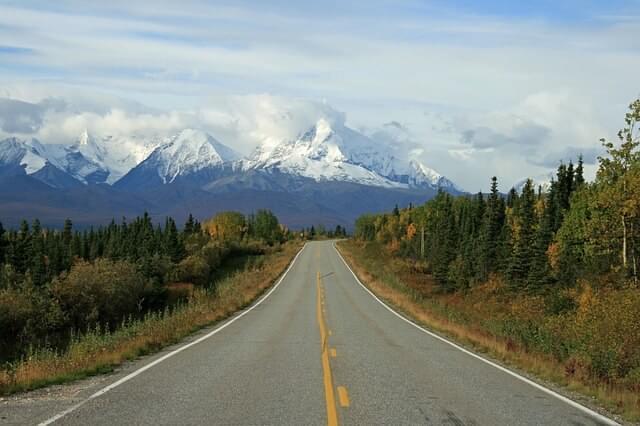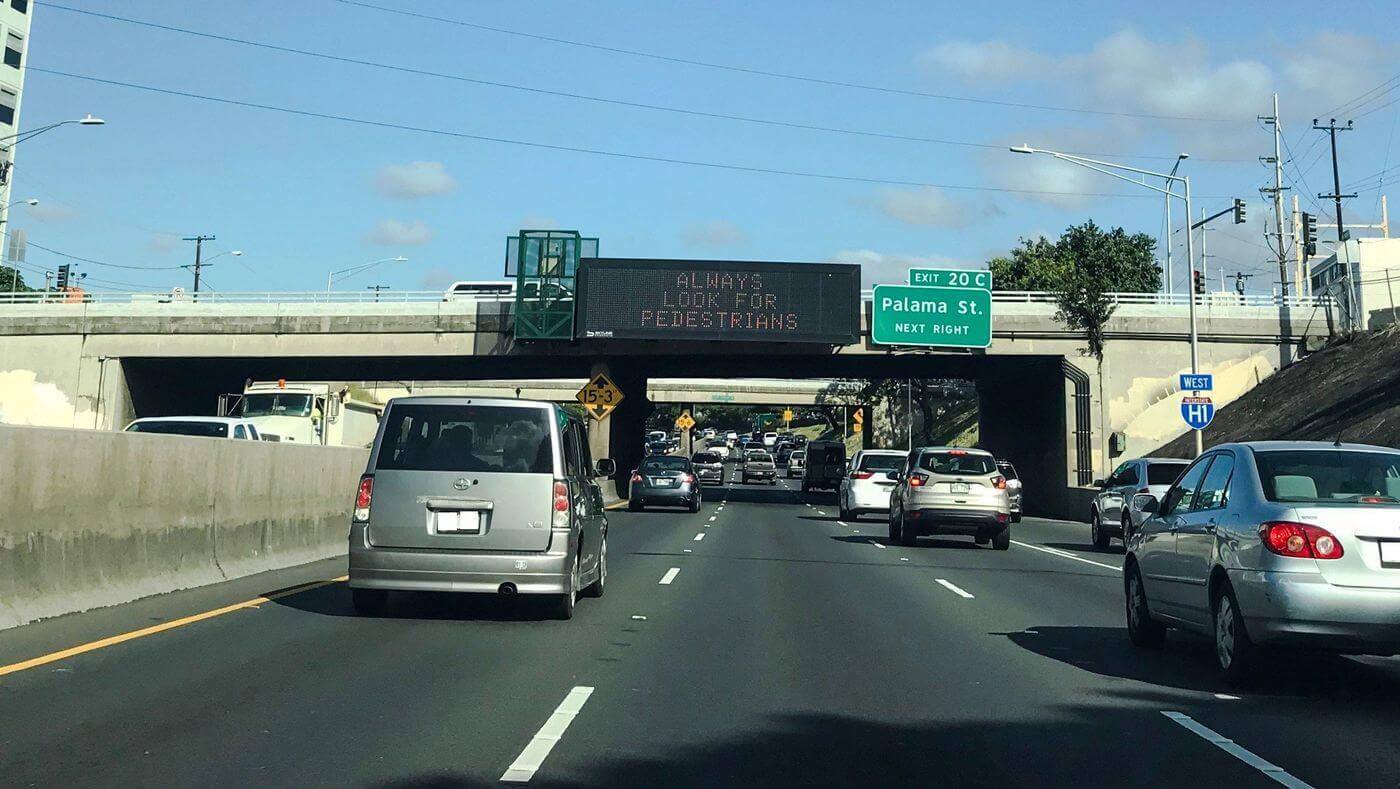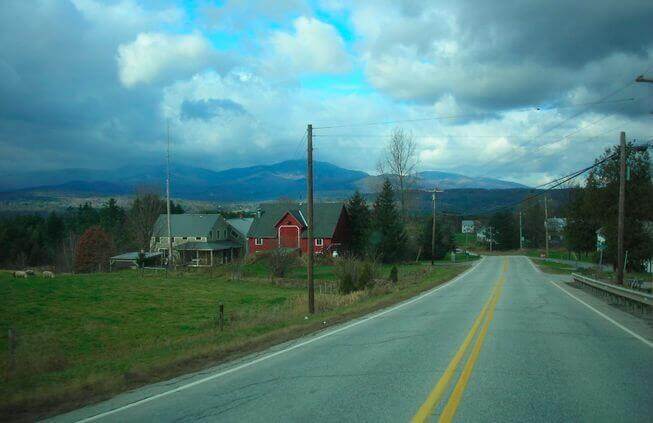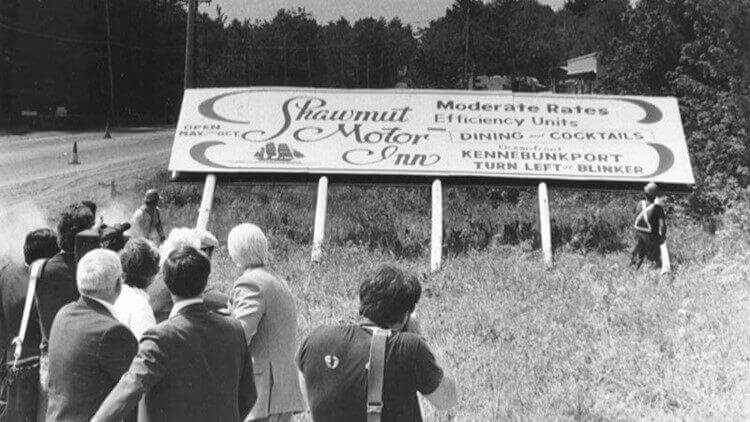
For some, this might be a shocking reality in the world of outdoor advertising. How could it be possible for billboards to be eliminated from the landscapes of certain states we’re familiar with? Well, with growing environmental preservation and restoration initiatives we may be entering the plight of billboard culture. Billboards and sign control have been hot topics in the states of Alaska, Hawaii, Vermont, and Maine, which we will go over in this blog post. These are examples of four states which have signed off on the billboard ban, creating more open space for other statewide opportunities or beautification purposes. Political campaigns and advertising for business have been cut short in states like these because of their absence in an outdoor impression. Let’s go over why exactly billboards are banned in Alaska, Hawaii, Vermont, and Maine and unpack who is behind the action.

Alaska Not on Board
In 1949, Alaska did something the rest of the world never saw coming… they banned the use of billboards! By state referendum, you aren’t allowed to advertise using billboards within 660 feet from the highway including all state-owned roads. After much lobbying took place, business groups and passionate billboard activists managed to pass a law which allowed for 1.5′ x 7.5′ directional billboards erected on privately owned lands next to open roads. Many people in Alaska, who don’t see billboards as being a nuisance, have been fighting for a repeal. The Alaska Visitors Association has been a poignant group of people that seek to change this law. They see that billboard advertising is important for businesses in Alaska to exist, as it gives consumers important information about the business and topics that exist within Alaskan culture.
While these activists have been forthcoming in creating change, the governmental powers in Alaska have been on the fence about the opinions surrounding billboard advertising. Politicians have even tried their hands at putting up their own billboards around certain areas in Alaska as a means of political campaign awareness and law rebuttal, however every time this happens their messages are consequentially taken down. An example of this took place in July of 2018 when the state Department of Transportation removed campaign signs in Alaska. There was talk that the law around restricting billboard use was an inconsistent application. This particular lawsuit was filed by the American Civil Liberties Union of Alaska, Palmer resident Eric Siebels and the group Dunleavy for Alaska, which backs governor Mike Dunleavy. The law was claimed to be unconstitutional, and suggested that transport workers removed political signage but didn’t touch non-political signs in the same space. This implies that political speech in Alaska is heavily regulated and has another set of rules than non-political messages. There is a speculation of selective enforcement for billboard existence.
In 1997, the Legislature made an exception for tourism advertising billboards in Alaska which surprised many. However, the following year, 72 percent of Alaskan residents voted on the ballot measure to reverse the exception. Voters wanted to prohibit commercial advertising, which included these forms of billboards. Evidently still, the scenic beauty of Alaska is more important than the state’s focus on billboards. To this day, there is still debate about selective enforcement of billboard messages in Alaska but one thing remains true: they’re not fond of it altogether.

Hawaii Not on Board
Hawaii was the first state to ban billboards dating back to the 1920s. With over 8 million tourists visiting Hawaii every day, primarily for its breathtaking climate and attractive customs, there’s no real push for billboard displays. Could this be the case because their land is so pure to leave no room for a manmade creation? This state has preserved its natural land formation through initiatives from the Outdoor Circle, which pioneers the removal of aerial advertising. The Outdoor Circle is a statewide environmental non-profit that works with branches along the Hawaiian Islands to protect Hawaii’s nature beauty for generations to come through community improvement projects and public education. Parks, greenways, and bikeways are maintained with the help of this organization. Sustainability and recycling are part of their morals. Outdoor Circle is primarily responsible for planting trees and establishing many open green spaces. In this way, they rid any billboards in sight.
On the flip-side to beautification practises by the Outdoor Circle, politicians in Hawaii aren’t able to promote their candidacy through outdoor signage, limiting their potential voters. One candidate in particular, by the name of Charles Campbell, fought against this billboard elimination by waving handmade signs at drivers along highways in hopes to get his political campaign noticed. In 1968, Campbell singlehandedly created sign waving, which is a unique form of outdoor advertising still used in Hawaii to get your message across to an audience. This shaped the way political candidates advertise for the future. It’s an effective replacement to political billboard propaganda. However not able to remain in one solid place for a period of time, sign waving still locks in the eyes of potential voters in a fast paced fashion. To this day, people in Hawaii carry signs along highways that are created to spread awareness of chosen political viewpoints and advertise local representatives. Here’s a fun fact about signage in Hawaii: the “shaka” hand signal is used to allure people of the sign being waved.
Although Hawaii is not on board with billboard culture, they have their ways to practise advertising that will effectively reach the target they want. Especially in a political climate, people in Hawaii have no problem going out of their way to sign wave in order to get noticed and have action taken.

Vermont Not on Board
In 1968, Vermont bites the dust and bans billboards altogether. Vermont’s landmark anti-billboard law left the land lawful, untouched, and open. A man by the name of Ted Riehle was responsible for preserving the natural beauty of the state by beginning the change that remains true today: no billboards in sight in Vermont.
Riehle was the owner of Savage Island, a secluded area of Vermont, and was influential enough to persuade many people to believe that billboard advertising was only doing Vermont dirty. Riehle cleared Savage Island himself, which was a fantastical place filled with sandy beaches, clean pastures, and surrounding woodland. Riehle wanted this vision aligned with Vermont’s landscape. He was a conservationist who enjoyed decadent conveniences and saw that the land before him should be cherished, not added to by useless materials aka billboards. Because of his popularity and influence in Vermont, Riehle was able to sway the government to prohibit the continuation of billboard advertising. Being the vice-president of a New York based company that manufactured metal also helped his reputation.
Faces like Riehle believed strongly that Vermont would benefit both financially and aesthetically by the elimination of billboards. Over time, tourism in Vermont has increased and visitors look forward to travelling through open land and natural beauty. In fact, it’s said to be the number one reason why they visit in the first place. The positive feedback from tourists about the absence of billboards maintains the normalcy of this standard law in Vermont.

Maine Not on Board
Taking place in the early 80s, the state of Maine hopped on the no billboard train. Governor James B. Longley signed an act that removed about 8500 billboards along the roads in Maine. Maine was the second state, following Vermont, to ban off-premises billboards. This billboard ban took about six or seven years to remove all billboards from the state of Maine, with the last one being the Shawmut Motor Inn in York County along Route 1 as pictured above. In 2013, nine separate bills brought forth to the Maine Legislature fought to adjust the sign regulations but all were turned away. As is today, Maine law states that signs within 1000 feet of a business are legal but are subject to limitations (such as a 25-foot heigh limit).
Prior to the early 80s, Maine highways were littered with billboards promoting products like cigarettes and confectionary food. Nowadays, cigarettes and confectionary food are tightly kept inside convenience stores. The state saw that tourists were drawn to Maine because of its natural appeal, so a billboard ban made a lot of sense for them. Dana Connors, President of the Main State Chamber of Commerce, admitted that part of Maine’s quality of place was that there aren’t any billboards deteriorating its satisfaction.
After looking at how Alaska, Hawaii, Vermont, and Maine eliminated the use of billboards in outdoor spaces it really makes you wonder how well businesses can operate in these states without this form of advertising. It also makes you think about the natural vs. the unnatural in the realm of conservation and consumerism. For all the reasons listed above, it makes some sort of sense why billboards are banned in these states. There’s no doubt that billboards will still remain alive and useful in other parts of the world because of the demand for more advertising space.


